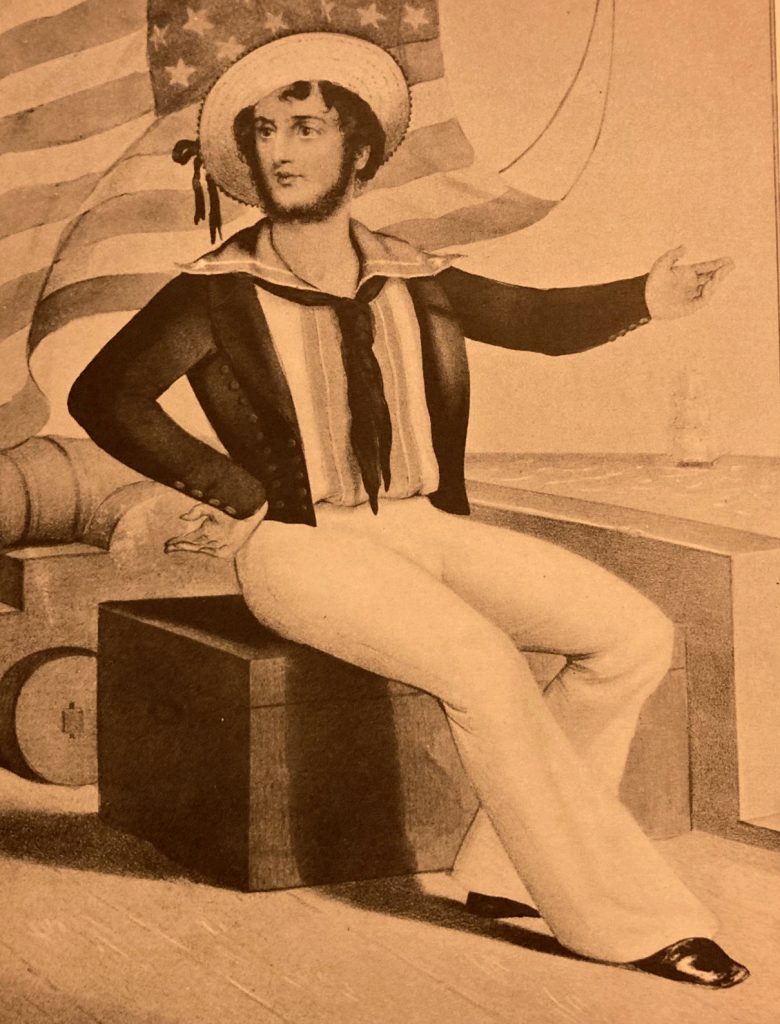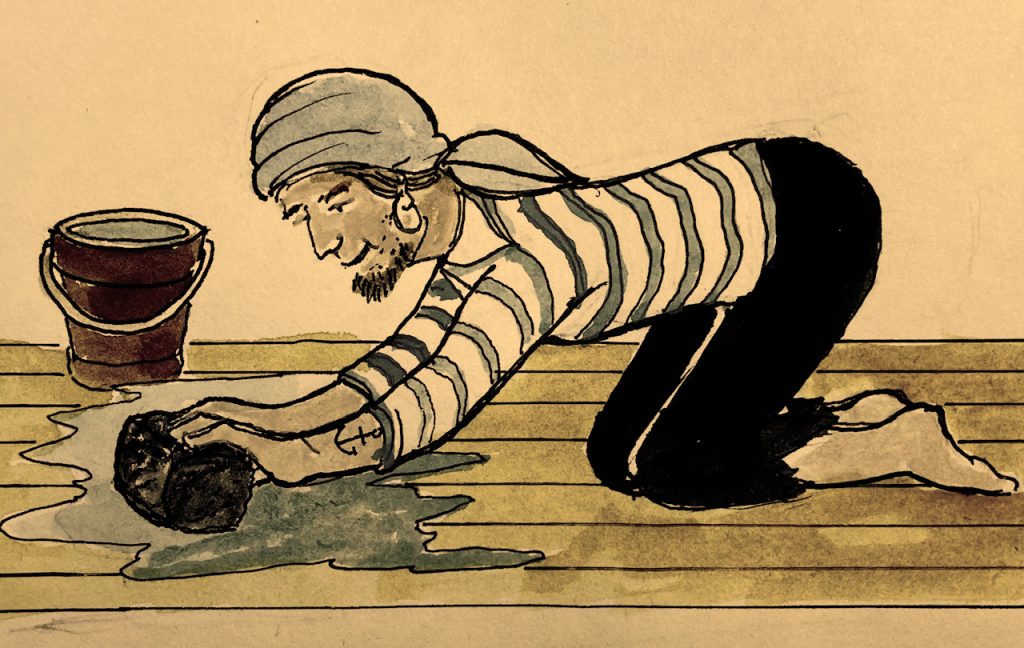Tar, that thick, gooey, mess has been used on ships for many purposes since the beginning of ancient voyages. All types of tars and pitch formulas were used on hulls, decks, riggings, and even on a seaman’s clothing. It has always been the crew fighting against the forces of rotting decks, fouled hulls, stretching wet riggings and wet clothing.

From the time of the Phoenicians, Egyptians, Greeks, Romans, Carthaginians and many other BCE civilizations, the Mediterranean Sea was the quickest and most efficient highway of trade between empires. Large ships like the Egyptian vessels which were over 160’ long, could carry that country’s bounty of the fertile Nile Delta’s grains to far ports of trade. These shipments brought in profits enriching the Pharaohs and his country. Over the millennia, every major power got into the sea trade, whether it was shipping wine, olive oil, tin ingots, copper, and food. These merchant ships had to be defended from enemies and pirates with navies to come to their defense, but their biggest enemy was the sea itself. Wooden hull plank seams would leak and the wood below the waterline would get fouled in a matter of months. It could grow so thick that ships would have to stop sailing and be rebuilt. Decks would rot out. They had to be hauled out and scraped and all the rot replaced. This was an expensive undertaking and kept a constant number of ships out of use. Less ships, less profits! Mariners had to search for something that would keep hulls watertight and combat rot.
Eventually, they came upon a natural pitch, called “Tar” which could be readily found seeping to the ground surface, to seal up hull seams and coat bottoms. The tar they used was thick offside of petroleum that would ooze to the earth’s surface and could be scraped up like taffy and then spread in between the blank seams and then on the ship hull, below the water line, to keep it waterproof and resist boring worms and rot. For the hulls of ancient ships, it was an improvement by barely sufficing in reducing fouling. The tar had to be reapplied at scheduled intervals. As shipping knowledge moved on, thin lead sheets and eventually copper sheets were added over the tar to further help reduce the problems, but never entirely eradicated it. Today’s boats and ships have state of science anti anti-fouling formulas that replace the use of tar on any hulls.

Over time, it was discovered that a different type of tar could be milked from pine trees. This was reduced with mineral spirits and some petroleum tar to make a smooth appliable coating for the decks of ships to keep them waterproof and free from rot. On the sloop Priscilla, at the Long Island Maritime Museum, this formula called “Pine Tar” is applied to the decks at the beginning of every season. Any wood on a vessel that is not varnished can be pine-tarred. When the formula dries, the vessel is graced with a slip-free deck for the crew.
The standing lines, which hold up and steady masts on sailing ships were generally made of manila and always tarred for waterproofing and rot protection. Other lines were left in their natural pliable state so that they could be worked easily when tying a ship in its birth, releasing a tender boat off its davits, or used as the anchor line. Working lines like these and more had to be very pliable and tarring wood made lines stiff and stiffer, with repeated applications.
During the great age of sailing ships, from 1600-1920, sailors who worked on the decks and climbed the ratlines aloft to set the sails were called “Tars”. There were many reasons for this. Firstly, the crew who did the dirty work was often up to their elbows in black pitch, tarring seams, standing lines, etc. They would dump raw salt water on the decks, get on their hands and knees, and rub the deck with a heavy stone that stripped the wood of any slippery dirt. The surface was then flooded with water again and mopped up. The deck would dry to an almost oaky-white color and be coated with the pine tar solution mentioned above, to seal the deck fibers and keep it slip-free.
Secondly, these sailors were titled “Tars” because of the clothing they wore, especially when they sailed into harsh storms with mammoth waves crashing over the bow and gunnels. During these heady times, part of the crew had to stay topside and keep watch. But how could they possibly stay dry? That’s where the first foul weather gear comes in. This foul weather gear was made of a substantial material such as cotton or canvas. It was long and originally cut like an oversized cape. Later it was fashioned into a long coat with toggle closures. They could be coated with linseed oil but more often they just applied several coats of diluted Pine Tar. Their storm hats were treated in the same manner. The use of all these tar materials gave both sailors and ships an acrid oily smell.
Sailing in warmer climates, the crew members always wore their pants cut mid-calf and oiled. Their summer hats were also oiled. On a side note, the invention of pants we wear today was invented by sailors. In any event, tarred clothing for foul weather gear continued to be used on ships into World War II, then various poly materials began to be applied to waterproof modern, lightweight nautical foul weather gear and new deck coatings replaced tar on everything except historic vessels.
One last mention of tarring and we are done – or he is done -Captain Kidd that is, who I be talkin’ about. Well, when this ruthless pirate was tried, convicted, and hanged (the only man hung three times for the same crime) he was not through with the smell of tar that he endured in his life at sea. To discourage piracy, the English Crown took his body and hung it up for the seagulls to eat. He was mast down to a few muscles and bones, they coated him with several layers of thick tar, stood his skimpy remains in a specially built iron cage and hung him on the banks of the river Thames to scare sailors away from a life of piracy. Kidd remained there long after the age of piracy began to fade. Just thinking about it scares the tar out of me.
Copyright 2024 by Mark C. Nuccio All rights reserved
Mark—-mark@designedge.net.
